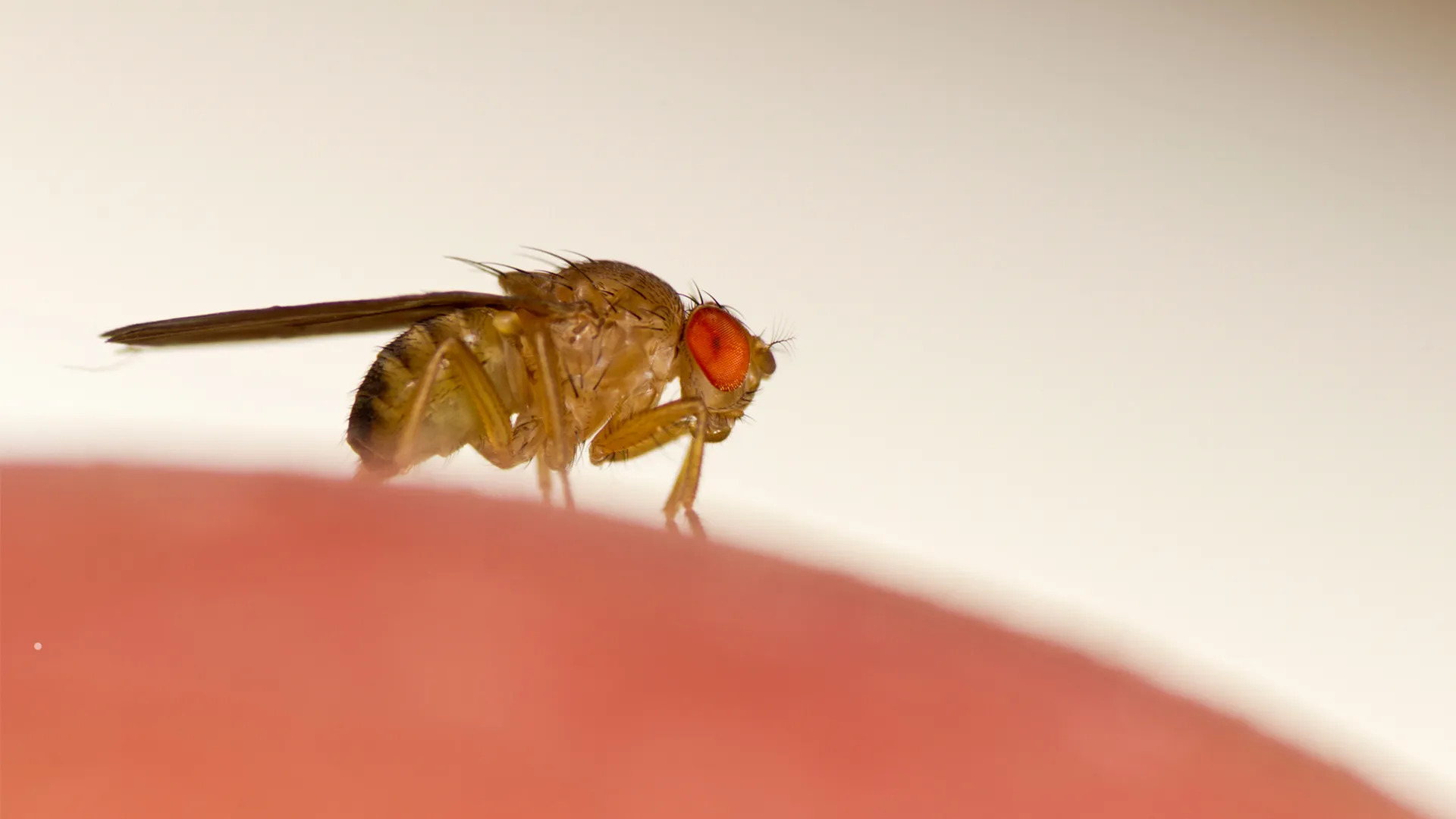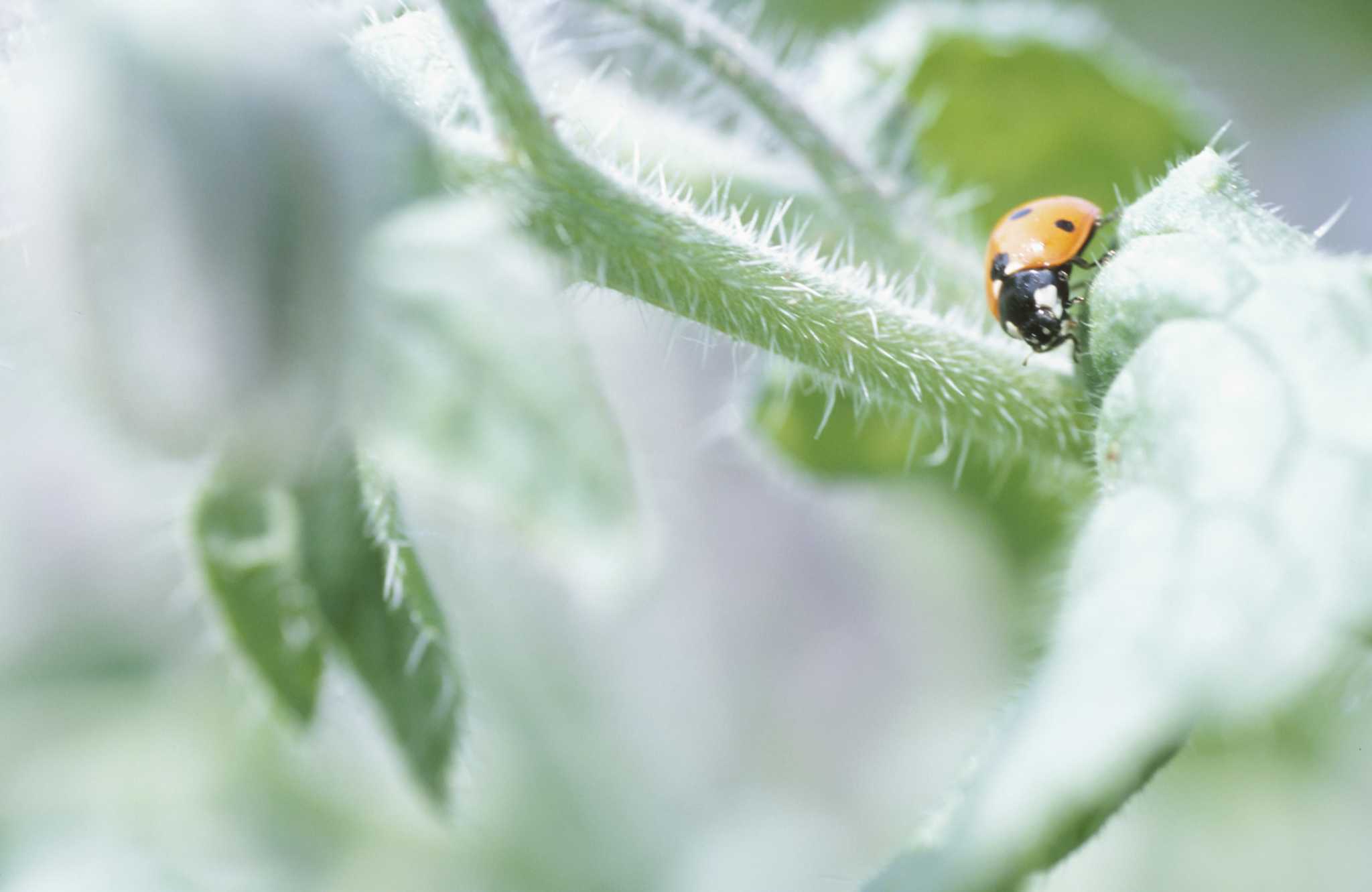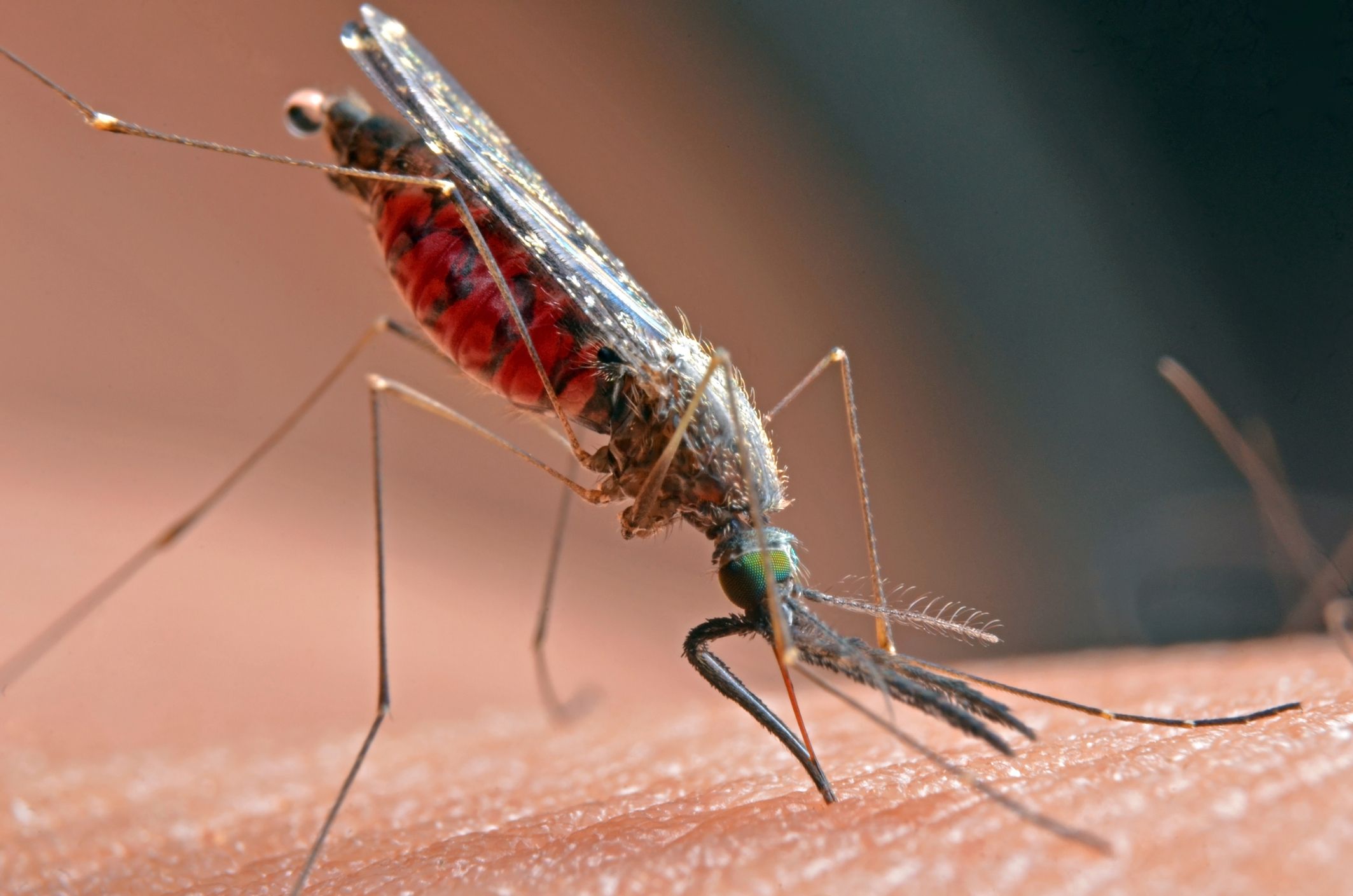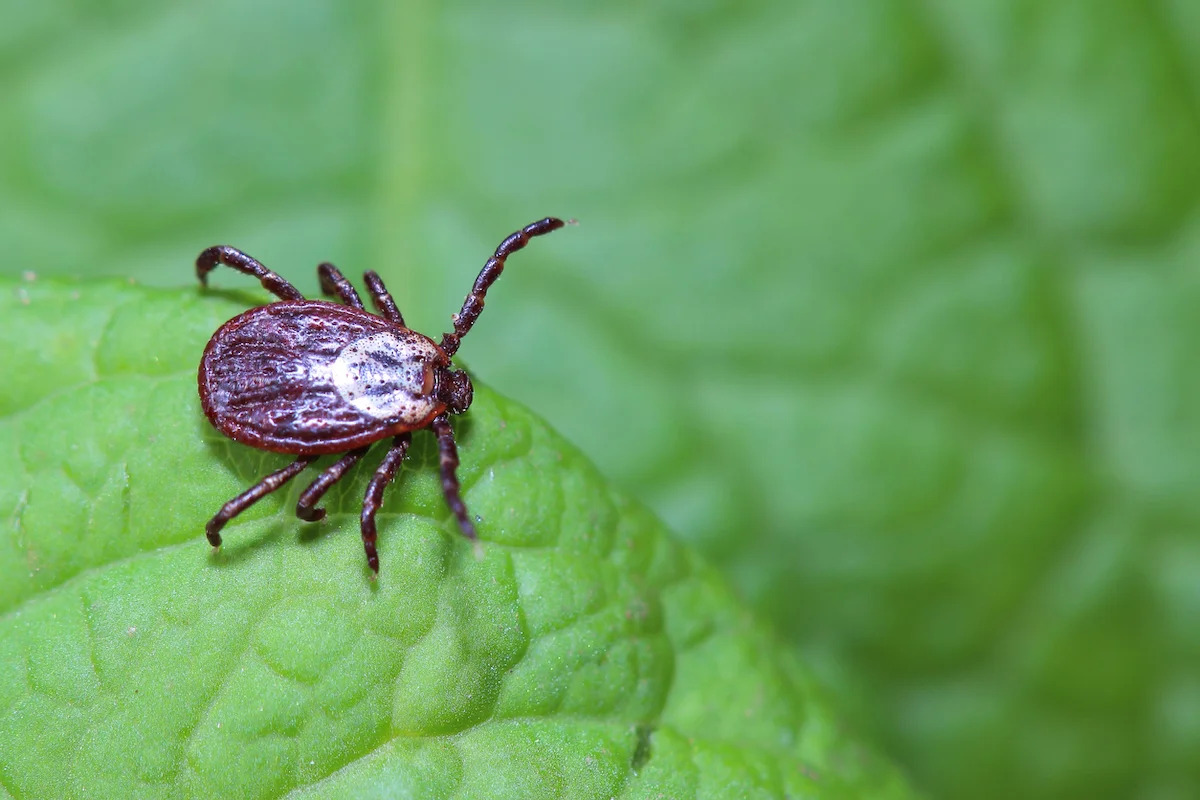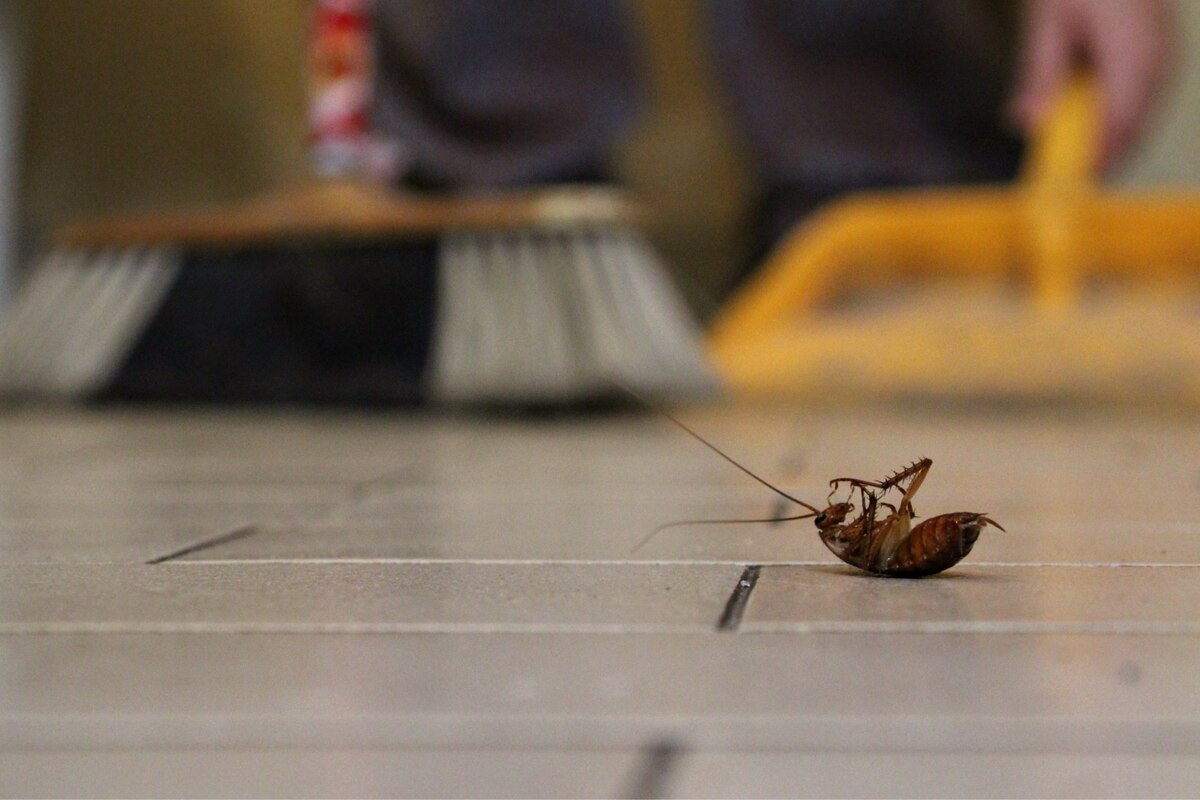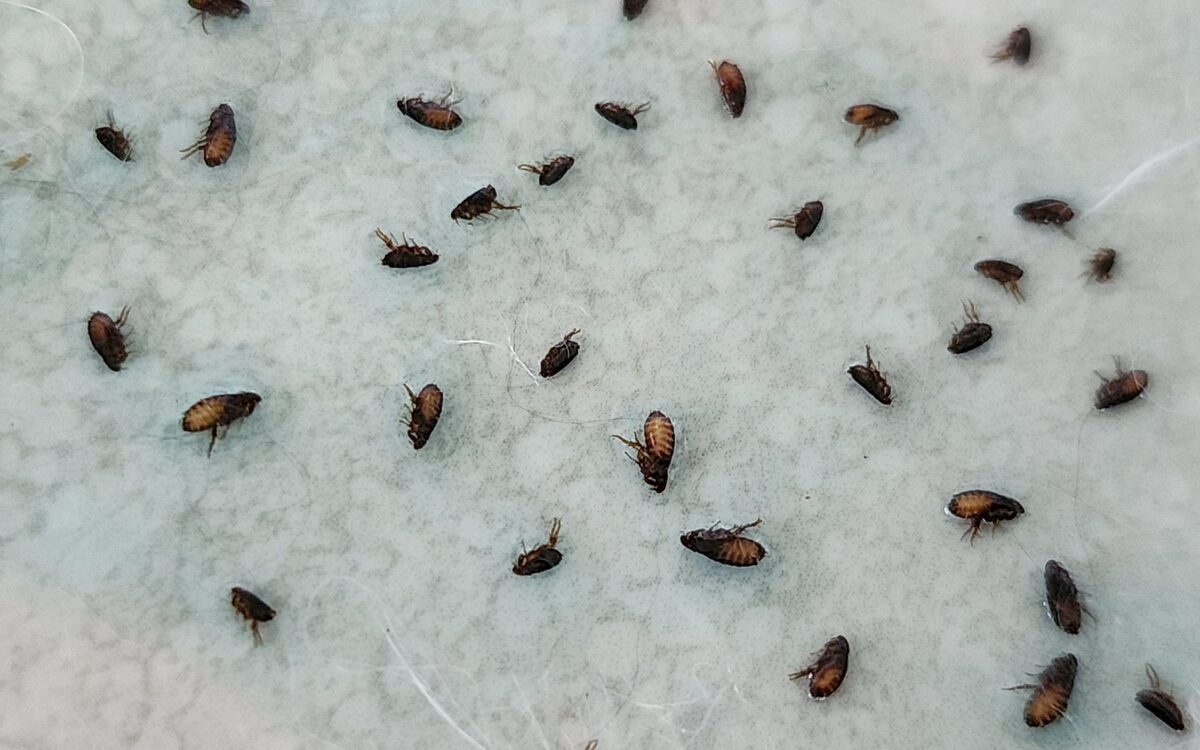Home>Gardening News and Trends>Latest News>What Does Cordyceps Do To Insects
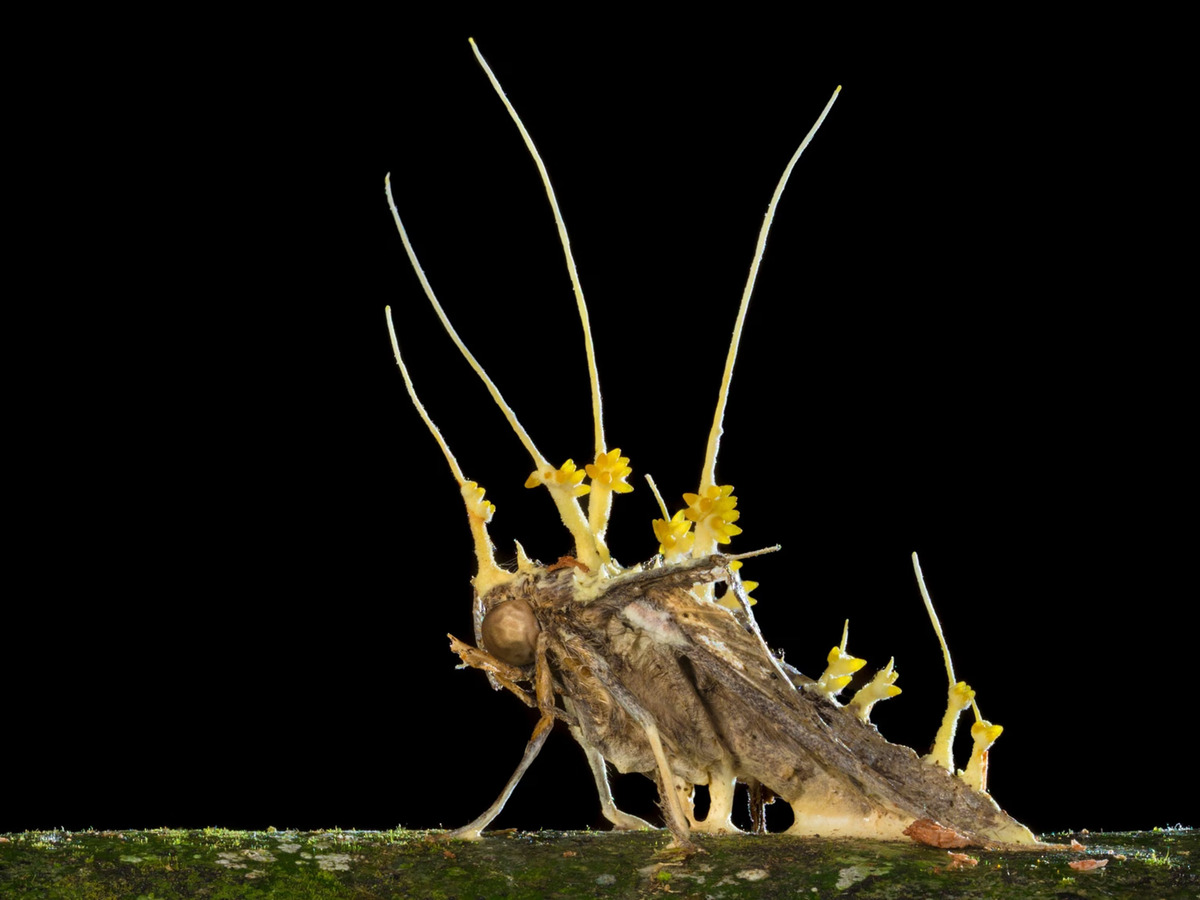

Latest News
What Does Cordyceps Do To Insects
Published: December 2, 2023
Discover the latest news on Cordyceps and its fascinating effects on insects. Learn how this natural phenomenon can impact the insect world.
(Many of the links in this article redirect to a specific reviewed product. Your purchase of these products through affiliate links helps to generate commission for Chicagolandgardening.com, at no extra cost. Learn more)
Table of Contents
Introduction
Welcome to the fascinating world of cordyceps! While you may have heard about this incredible fungus before, you may not be aware of the incredible impact it has on insects. Cordyceps is a unique organism that is known for its ability to infect and manipulate insects, turning them into unwitting hosts and driving them to perform bizarre behaviors. It is a true marvel of nature that has captivated the attention of scientists and nature enthusiasts alike.
Mysterious and enigmatic, cordyceps fungi belong to Ascomycota, one of the largest phyla in the fungal kingdom. They have a complex life cycle that involves infecting and colonizing insects, ultimately leading to their demise. This intricate relationship between Cordyceps and insects has fascinated researchers for years, prompting deeper investigations into the mechanisms behind these astonishing interactions.
One of the most remarkable aspects of Cordyceps is its ability to manipulate the behavior of infected insects. The fungus has evolved to control the actions of its hosts, compelling them to carry out activities that ultimately benefit the growth and reproduction of the fungus. These behavioral changes are essential for the successful completion of the cordyceps life cycle.
While cordyceps primarily infects insects, it is not limited to a specific host species. It has been discovered in various insect groups, from ants and beetles to moths and butterflies, demonstrating its adaptability and wide-ranging impact. The infections typically occur in natural habitats such as forests or grasslands, where the fungus thrives and targets its unsuspecting victims.
In this article, we will take a closer look at the extraordinary world of cordyceps and explore how it infects and manipulates insects. We will delve into the physiological and behavioral changes that occur in infected insects, uncover the mechanisms behind the fungus’ ability to control host behavior, and unravel the methods through which cordyceps acquires nutrients from its host. Prepare to be amazed as we unravel the intricate web of interactions between cordyceps and insects, shedding light on one of the most astonishing phenomena in the natural world.
Overview of Cordyceps
Cordyceps, also known as the “caterpillar fungus,” is a unique and highly specialized fungi species belonging to the genus Cordyceps. It is renowned for its extraordinary ability to infect insects, take control of their behavior, and ultimately cause their demise. Cordyceps fungi are found in diverse ecosystems around the world, with species inhabiting forests, grasslands, and alpine regions.
There are over 400 known species of cordyceps, each with its own host preferences and unique life cycle. The most notable and studied species is Cordyceps sinensis, which is found primarily in the high-altitude regions of the Himalayas. Cordyceps sinensis is highly valued in traditional Chinese medicine and has been used for centuries to treat various ailments and enhance overall health.
The life cycle of cordyceps fungi is intricate, fascinating, and highly specialized. It typically starts when a fungal spore lands on the body of an insect host. Upon contact, the spore germinates and infiltrates the host, releasing enzymes that facilitate the invasion of the insect’s tissues. As the fungus grows, it starts to consume the internal organs of the host, eventually killing it.
After the host dies, the cordyceps fungus continues to grow, eventually forming a fruiting body known as a stroma. The stroma emerges from the host’s body and releases spores into the surrounding environment, which can then infect other insects and continue the cycle. This fruiting body is the part of the fungus that is typically harvested for medicinal or culinary purposes.
Aside from its impact on insects, cordyceps fungi have also been a subject of interest in scientific research due to their potential health benefits for humans. They are believed to possess various bioactive compounds, including polysaccharides, nucleosides, and antioxidants, that may have immunomodulatory, anti-inflammatory, and anti-tumor properties. However, it is important to note that further research is still needed to fully understand and validate these potential health benefits.
In the following sections, we will explore in more detail the fascinating life cycle of cordyceps fungi, the mechanisms behind its infection process, and the remarkable changes it induces in infected insects. Brace yourself for a deep dive into the intricacies of this incredible fungus and the world it inhabits.
Life Cycle of Cordyceps Fungi
The life cycle of cordyceps fungi is a complex and fascinating process that involves multiple stages and interactions with insect hosts. Understanding this life cycle is crucial in unraveling the mechanisms behind the fungus’ remarkable ability to infect and control the behavior of its unsuspecting victims.
The life cycle begins with the release of fungal spores into the environment. These spores are tiny and lightweight, allowing them to be carried by air currents and dispersing over a wide area. When conditions are favorable, such as humidity and the presence of suitable host insects, the spores can land on the body of an insect and initiate the infection process.
Upon contact with a potential host, the cordyceps spores germinate and produce hyphae, which are thread-like structures that penetrate the insect’s exoskeleton. Enzymes are then secreted to break down the organic matter of the host, allowing the hyphae to invade the insect’s body. This marks the beginning of the active infection stage.
As the hyphae colonize the host, they continue to grow and consume the tissues of the insect. The fungal cells release various enzymes and toxins that facilitate the breakdown of the internal organs, leading to the eventual death of the host. The exact mechanisms through which Cordyceps kills its hosts are still not fully understood, but it is believed to involve a combination of physiological disruption and chemical warfare.
Once the host has succumbed to the infection, the cordyceps fungus continues to grow inside the insect’s body. It absorbs nutrients from the host’s tissues and utilizes them for its own metabolic processes. This stage is crucial for the development and maturation of the fungus.
When the conditions are favorable, typically with the arrival of the rainy season, the cordyceps fungus is ready to complete its life cycle. It begins to form a protrusion, called a stroma, from the host’s body. The stroma is the reproductive structure of the fungus and serves as a platform for the production and dispersal of spores.
The stroma emerges from the host and consists of a slender stalk with a head-like structure at the top. Within the head, numerous sacs, called asci, develop and contain the spores. Asci are specialized cells capable of producing and releasing spores, which are eventually ejected into the surrounding environment.
These spores are then carried by air currents and other means, allowing them to potentially infect new host insects and continue the cycle of infection. The life cycle of cordyceps fungi is a remarkable example of nature’s complexity and the intricate strategies employed by organisms to ensure their survival and reproduction.
In the next section, we will explore the fascinating process of infection by cordyceps fungi and the physiological changes it induces in its host insects. Brace yourself for an intriguing journey into the world of fungal infections and their impact on the insect kingdom.
Infection Process
The infection process of cordyceps fungi is a finely-tuned mechanism that enables them to target and invade their insect hosts with remarkable precision. It involves a series of steps that allow the fungus to penetrate the host’s protective layers and establish a stronghold within its body.
It all begins when a fungal spore comes into contact with the body of a susceptible insect. These spores are incredibly resilient and can survive in various environmental conditions, allowing them to be dispersed over vast distances. When a spore lands on an insect, it senses the presence of a potential host and initiates the infection process.
Upon contact, the cordyceps spore germinates, and a fine hyphal tube extends from it. This tube then begins to breach the insect’s outermost layer, such as the exoskeleton. The hyphae continue to grow and extend into the insect’s body, effectively colonizing its tissues.
As the hyphae penetrate deeper, they release enzymes and other chemicals that break down the organic matter of the host. These substances act as a means of defense against the insect’s immune system and facilitate the invasion process. Additionally, the fungus may produce toxins that directly affect the host’s physiology, further aiding in infection.
Once inside the insect’s body, the hyphae proliferate and branch out, forming a network that spreads throughout the host’s tissues. As the fungus grows, it consumes nutrients from the host, utilizing them for its own metabolic processes and ensuring its survival and development.
As the infection progresses, the cordyceps fungus takes control of various physiological functions of the host. This manipulation is intended to serve the fungus’ best interests by creating an environment that is conducive to its growth and reproduction. The specific mechanisms through which cordyceps achieves this manipulative control are still the subject of ongoing research.
Throughout the infection process, multiple factors influence the outcome, including the virulence of the fungal strain, the immune response of the host, and environmental conditions. Some insects may exhibit resistance to infection, while others may succumb more readily to the invading fungus.
It is important to note that cordyceps infections are highly specific to their host insects. Different species of cordyceps fungi have evolved to target particular host groups, ensuring a higher chance of successful infection and transmission.
The infection process of cordyceps fungi is a testament to the extraordinary tactics employed by nature. Through a combination of enzymatic breakdown, chemical warfare, and manipulation of the host’s physiology, these fungi are able to invade their unsuspecting hosts and establish a stronghold within their bodies. In the next section, we will delve into the remarkable physiological and behavioral changes that occur in infected insects as a result of cordyceps infection.
Physiological Changes in Infected Insects
Cordyceps fungi are not content with simply infecting their insect hosts – they go a step further by inducing profound physiological changes that benefit their own growth and reproduction. These changes are orchestrated by the fungus and result in alterations to the host’s body and behavior.
One of the notable physiological changes observed in infected insects is the alteration of their metabolism. Cordyceps fungi have the ability to manipulate the host’s metabolic processes, redirecting energy and resources towards their own needs. This can result in the increased production of certain molecules and the suppression of others, creating an environment that is more favorable for the fungus to thrive.
The fungal infection can also lead to disruptions in the host’s hormone levels. Hormones play crucial roles in regulating various physiological processes in insects, including growth, development, and reproduction. Cordyceps fungi are able to modulate the production and signaling of hormones in infected insects, effectively hijacking the control mechanisms and redirecting them for their own benefit.
Another significant physiological change induced by cordyceps infection is the alteration of the immune response in infected insects. The immune system of insects plays a crucial role in defending against pathogenic invaders. However, cordyceps fungi possess mechanisms that allow them to incapacitate or evade the host’s immune system, ensuring their survival within the insect’s body.
In some cases, cordyceps fungi produce compounds that suppress the host’s immune response, rendering it less effective in combating the infection. Additionally, the fungi may produce enzymes or toxins that directly target and disrupt the insect’s immune cells, further weakening the body’s defense mechanisms.
Furthermore, cordyceps fungi may induce changes in the reproductive system of infected insects. In some cases, infected female insects experience alterations in their reproductive behavior, such as producing larger numbers of offspring or exhibiting prolonged receptivity to mates. This increased reproductive output serves as a strategy for the fungus to disperse its spores and maximize its chances of infecting new hosts.
It is important to note that the precise mechanisms behind these physiological changes are still the subject of ongoing research. Scientists continue to unravel the intricate strategies employed by cordyceps fungi to manipulate the physiology of their hosts for their own benefit.
The physiological changes induced by cordyceps infection on insects exemplify the remarkable ability of the fungus to subvert the host’s biology to ensure its own survival and reproduction. In the next section, we will explore how cordyceps fungi also manipulate the behavior of infected insects, resulting in bizarre and extraordinary alterations in their actions.
Behavioral Changes in Infected Insects
Cordyceps fungi are masters of manipulation when it comes to controlling the behavior of their insect hosts. Once infected, the fungus induces a range of bizarre and often fatal behavioral changes that serve to further its own reproductive goals.
One of the most extraordinary behavioral changes observed in infected insects is the alteration of their movement patterns. Cordyceps fungi have the ability to take control of the insect’s nervous system, redirecting its behavior to suit their needs. Infected insects often exhibit unusual movements, such as crawling to elevated positions on vegetation or exposing themselves in a vulnerable manner.
These behavioral changes are not random but rather serve a specific purpose. By positioning the host in an optimal location, the cordyceps fungus increases the chances of its spores being dispersed to new potential hosts, maximizing its reproductive success.
Another remarkable behavioral change induced by cordyceps infection is the manipulation of the insect’s social behavior. Certain species of cordyceps fungi target social insects, such as ants or termites, which live in highly organized colonies. Once infected, the infected insects often exhibit abnormal behaviors that disrupt the social hierarchy and organization of the colony.
For example, infected ants may exhibit erratic movements, break away from their normal tasks, or wander away from the colony. These changes in behavior make the infected individual more likely to come into contact with healthy ants, leading to the spread of the fungal infection within the colony.
In some instances, cordyceps fungi are even capable of inducing a behavior known as “summit disease”. This behavior is observed in infected ants, which exhibit a compulsion to climb to the highest point possible. This heightens the chances of spore dispersal and ultimately aids in the fungus’ reproductive cycle.
It is important to note that the mechanisms through which cordyceps fungi manipulate host behavior are still not fully understood. However, it is believed that the fungus produces bioactive compounds that directly affect the insect’s nervous system or influence neurotransmitter levels, leading to the observed behavioral changes.
The study of the behavioral changes induced by cordyceps infection not only provides insights into the intricate relationship between the fungus and its host but also offers a glimpse into the astounding abilities of nature to manipulate behavior. In the next section, we will explore how cordyceps fungi extract nutrients from their infected hosts to ensure their own growth and development.
Manipulation of Host Behavior
The manipulation of host behavior by cordyceps fungi is a remarkable phenomenon that showcases the intricate strategies employed by the fungus to ensure its own survival and reproduction. Through a combination of chemical and physiological mechanisms, the fungus exerts control over the behavior of infected insects, directing their actions to serve its own reproductive goals.
One of the ways cordyceps fungi manipulate host behavior is by altering the insect’s neurological processes. The fungus produces bioactive compounds that can directly affect the insect’s nervous system and influence neurotransmitter levels. This manipulation can result in the modulation of the insect’s behavior, leading to actions that benefit the fungus.
For example, infected insects may exhibit increased movement or altered patterns of locomotion that facilitate the dispersal of cordyceps spores. Some insects may display a compulsion to climb to elevated positions or expose themselves to open areas, increasing the likelihood of spore transmission to new hosts.
Cordyceps fungi are also capable of disrupting social behaviors in insects that live in colonies or exhibit complex social structures. Infected individuals may exhibit behaviors that deviate from the established roles and hierarchies within the colony, leading to disruptions in the social dynamics of the group.
These manipulations can result in increased contact between infected and healthy individuals, which aids in the spread of the fungal infection. By altering the social cohesion of the insect society, cordyceps fungi ensure a higher chance of transmission and increase their chances of reproductive success.
Furthermore, cordyceps fungi may induce changes in the reproductive behavior of infected insects. In some cases, infected females may display increased fertility or altered mating preferences, promoting the production of more offspring. This serves to maximize the dissemination of cordyceps spores and further ensures the survival of the fungus.
Cordyceps fungi have evolved intricate mechanisms to manipulate host behavior, using a combination of chemical compounds and physiological changes. By exerting control over their hosts, the fungi can direct their actions in ways that benefit their own growth and reproduction, ultimately ensuring their survival in the natural environment.
While the exact mechanisms behind the manipulation of host behavior by cordyceps fungi are still being investigated, studying these interactions provides valuable insights into the complexity and adaptability of nature. In the next section, we will explore how cordyceps fungi acquire nutrients from infected hosts to sustain their own growth and development.
Nutrient Acquisition by Cordyceps
Cordyceps fungi follow a unique strategy to acquire the nutrients they need for growth and reproduction. Once inside the body of an infected insect, the fungus establishes a network of hyphae that infiltrate the host’s tissues, absorbing essential nutrients for its own metabolic processes.
The hyphae of cordyceps fungi secrete enzymes that break down the organic matter of the host, facilitating the extraction of nutrients. These enzymes play a crucial role in the degradation of various compounds present in the insect’s body, including proteins, carbohydrates, and lipids. Through this process, the fungus converts the host’s tissues into a source of nourishment.
In addition to the direct consumption of the host’s tissues, cordyceps fungi have evolved to manipulate the host’s physiology and redirect vital resources towards their own needs. As mentioned earlier, the fungus can alter the metabolic processes of infected insects, promoting the production of certain molecules that benefit its growth and suppressing others that are not essential.
Furthermore, cordyceps fungi have the ability to obtain nutrients indirectly from the host’s surroundings. For instance, some species of Cordyceps are known to encourage the growth of specific fungi or bacteria on the host’s body. These symbiotic organisms, in turn, aid in the breakdown of host tissues and provide additional nutrients for the cordyceps fungus.
Interestingly, the nutrient acquisition process of cordyceps fungi is highly efficient. They have evolved a sophisticated system that enables them to utilize the available resources optimally. This allows the fungus to continue growing and developing even in nutrient-limited environments.
It is important to note that the specific mechanisms and nutrient preferences of different species or strains of cordyceps may vary. Some species may have a preference for certain nutrients, while others may have a broader nutritional flexibility.
The nutrient acquisition strategies employed by cordyceps fungi are a testament to their adaptability and evolutionary success. By effectively utilizing the resources within their host’s body, these fungi can sustain their growth and ensure their own reproductive success.
In the final section, we will summarize the remarkable defense mechanisms possessed by infected insects and reflect on the incredible interplay between cordyceps fungi and their hosts.
Defense Mechanisms of Infected Insects
Infected insects are not defenseless against the onslaught of cordyceps fungi. They have evolved various defense mechanisms to resist or mitigate the effects of fungal infection. However, the battle between the host’s defense systems and the relentless strategies of the cordyceps fungi is a complex interplay that highlights the adaptability and persistence of both parties involved.
One of the primary defense mechanisms of insects is their immune system. Like other organisms, insects possess immune cells and molecules that recognize and neutralize pathogens, including fungal invaders. When a cordyceps fungus attempts to infect an insect, the immune system can mount a defense response to combat the infection.
The insect immune response against cordyceps fungi often involves the activation of immune cells that engulf and destroy invading fungal cells. Additionally, the insect’s immune system may release antimicrobial peptides and other molecules that inhibit fungal growth and spread. This defense mechanism is vital in preventing or slowing down the progression of the infection.
However, cordyceps fungi possess their own array of strategies to counter the host’s immune response. The fungi have evolved mechanisms to evade or suppress the host’s immune system, allowing them to establish a foothold within the insect’s body. Some species of cordyceps fungi produce compounds that directly interfere with the insect’s immune cells, rendering them less effective in combating the infection. Others may produce enzymes that break down the antimicrobial peptides released by the insect’s immune system.
In addition to the immune response, infected insects may exhibit behavioral and physiological defense mechanisms to mitigate the impact of cordyceps infection. Some insects have been observed to engage in self-grooming behaviors, attempting to remove fungal spores or hyphae from their bodies. This grooming behavior can help to reduce the fungal load and inhibit the progression of the infection.
Furthermore, insects may exhibit increased metabolic rates as a defense mechanism. By speeding up their metabolism, infected insects may generate higher temperatures or metabolic byproducts that are toxic to the cordyceps fungi. This heightened metabolic activity can serve as a strategy to limit the spread and impact of the infection.
It is important to note that the effectiveness of host defense mechanisms against cordyceps fungi can vary depending on several factors, including the specific species of insect and strain of cordyceps involved. Evolutionary pressure has led to a constant arms race between the host and the fungus, resulting in the development of complex defense and counter-defense strategies.
The defense mechanisms possessed by infected insects highlight the intricate balance between host resistance and pathogen persistence. The ongoing battle between cordyceps fungi and their insect hosts serves as a captivating example of the complex interactions and adaptations that occur in the natural world.
As we conclude this article, we have explored the captivating world of cordyceps fungi and their incredible impact on insects. From the remarkable life cycle to the manipulation of host behavior, these organisms have demonstrated their unique strategies for survival and reproduction. The study of cordyceps fungi continues to fascinate scientists and nature enthusiasts alike, shedding light on the intricate connections between species and the constant evolution of strategies for adaptation and survival.
Conclusion
The world of cordyceps fungi and their impact on insects is truly captivating. These remarkable organisms have evolved intricate strategies to infect, control, and manipulate their insect hosts in order to ensure their own survival and reproduction.
From the complex life cycle of the fungi to the physiological and behavioral changes induced in infected insects, cordyceps fungi showcase the astonishing diversity and adaptability of nature. The infection process involves the infiltration of the host’s body, nutrient acquisition, and manipulation of host behavior to facilitate the dispersal of spores.
Throughout the infection, cordyceps fungi display a sophisticated ability to alter the physiology and behavior of their hosts for their own benefit. The changes in metabolism, hormone levels, immune responses, and social behaviors of infected insects highlight the ingenious strategies employed by the fungi to ensure their reproductive success.
Meanwhile, infected insects have their own defenses against the relentless onslaught of cordyceps fungi. The immune response, behavioral grooming, and increased metabolic rates are just some of the mechanisms employed by the hosts to combat the infection. However, the battle between the hosts and the fungi is a constant interplay of adaptation and persistence.
The study of cordyceps fungi and their interactions with insects offers profound insights into the complex dynamics of coevolution and the astonishing abilities of organisms to manipulate behavior and physiology. This research not only unravels the mysteries of the natural world but also has potential implications in various fields, including medicine, agriculture, and ecology.
As we delve deeper into the world of cordyceps fungi, it becomes clear that their importance extends far beyond their impact on insects. Furthermore, their potential health benefits for humans and their role in ecosystems highlight the need for further research and exploration.
In conclusion, cordyceps fungi represent a fascinating and awe-inspiring aspect of the natural world. Their ability to infect, control, and manipulate insects demonstrates the incredible diversity and interplay of lifeforms in our ecosystem. By unraveling the secrets of this intricate relationship, we gain a greater appreciation for the complexity of nature and the remarkable strategies employed by organisms to ensure their survival and propagation.
